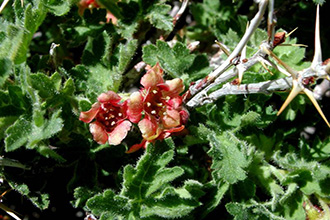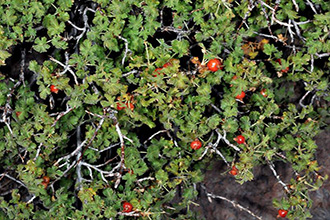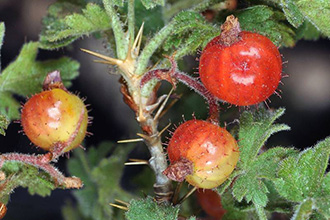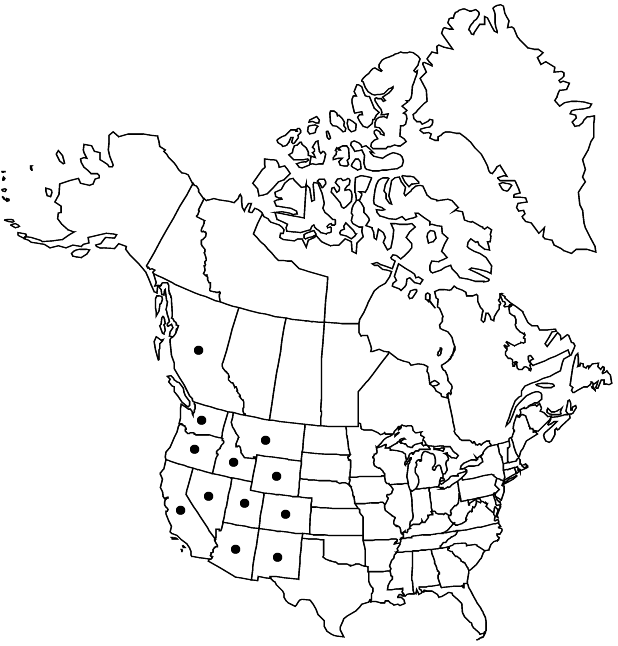Taxonomy: Kingdom - Plantae (plants). Subkingdom - Tracheobionta (vascular plants). Superdivision - Spermatophyta (seed plants). Division - Magnoliophyta (flowering plants). Class - Magnoliopsida (dicotyledons). Subclass - Rosidae. Order - Rosales. Family - Grossulariaceae (currant). Genus - Ribes L. Species - Ribes montigenum McClatchie
Ecology: Gooseberry currant is somewhat shade tolerant. It grows in dense forests with few canopy openings, but it occurs most often and grows most vigorously on sites without forest canopy. Gooseberry currant occurs on a variety of sites. It is found in dry, rocky places from the middle subalpine zone to timberline, sometimes extending into alpine communities. It grows on open, talus or scree slopes, on ridges, and in boulder fields, meadows, and forests. It may also occur along streams and in wet forests, ravines, and washes.



